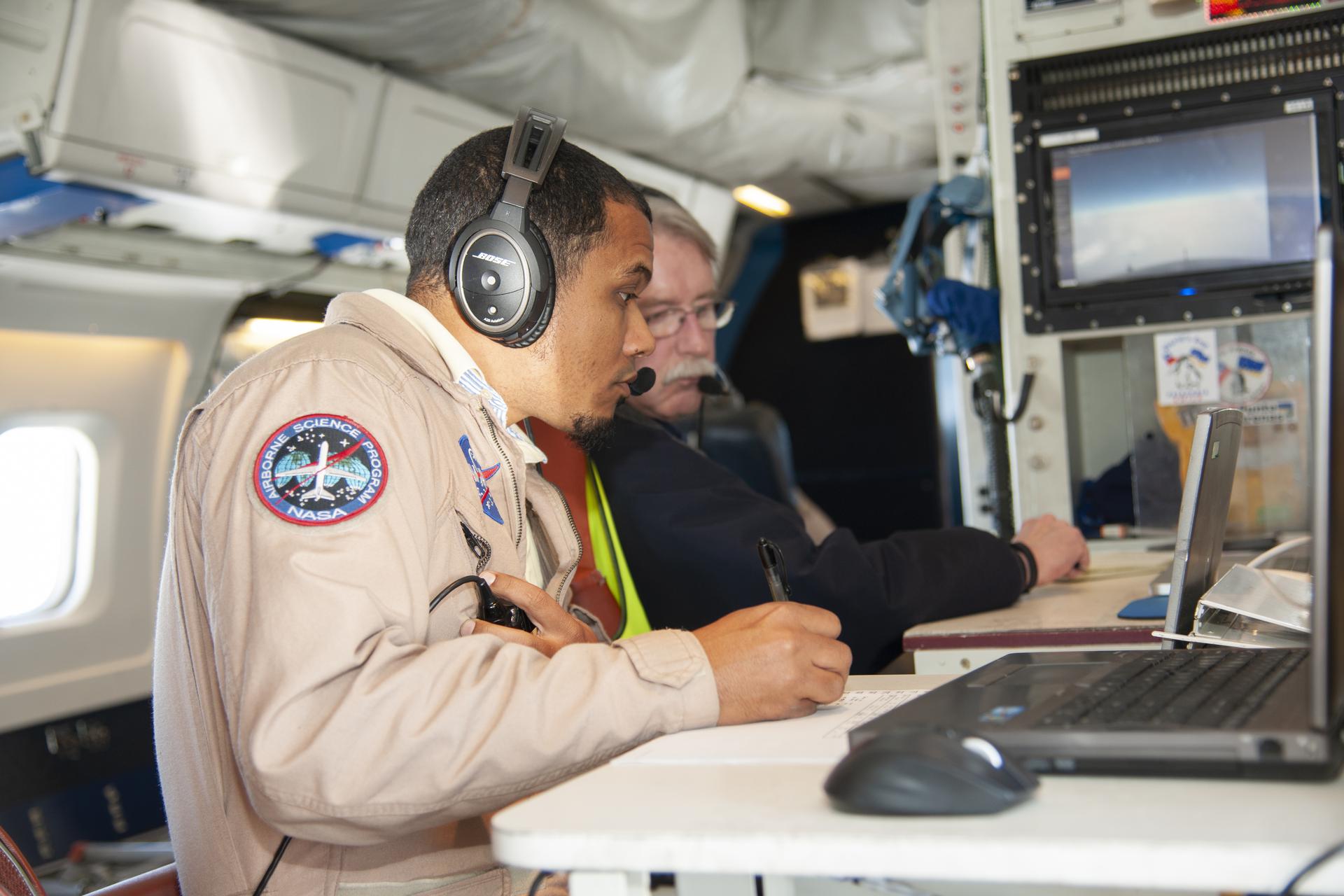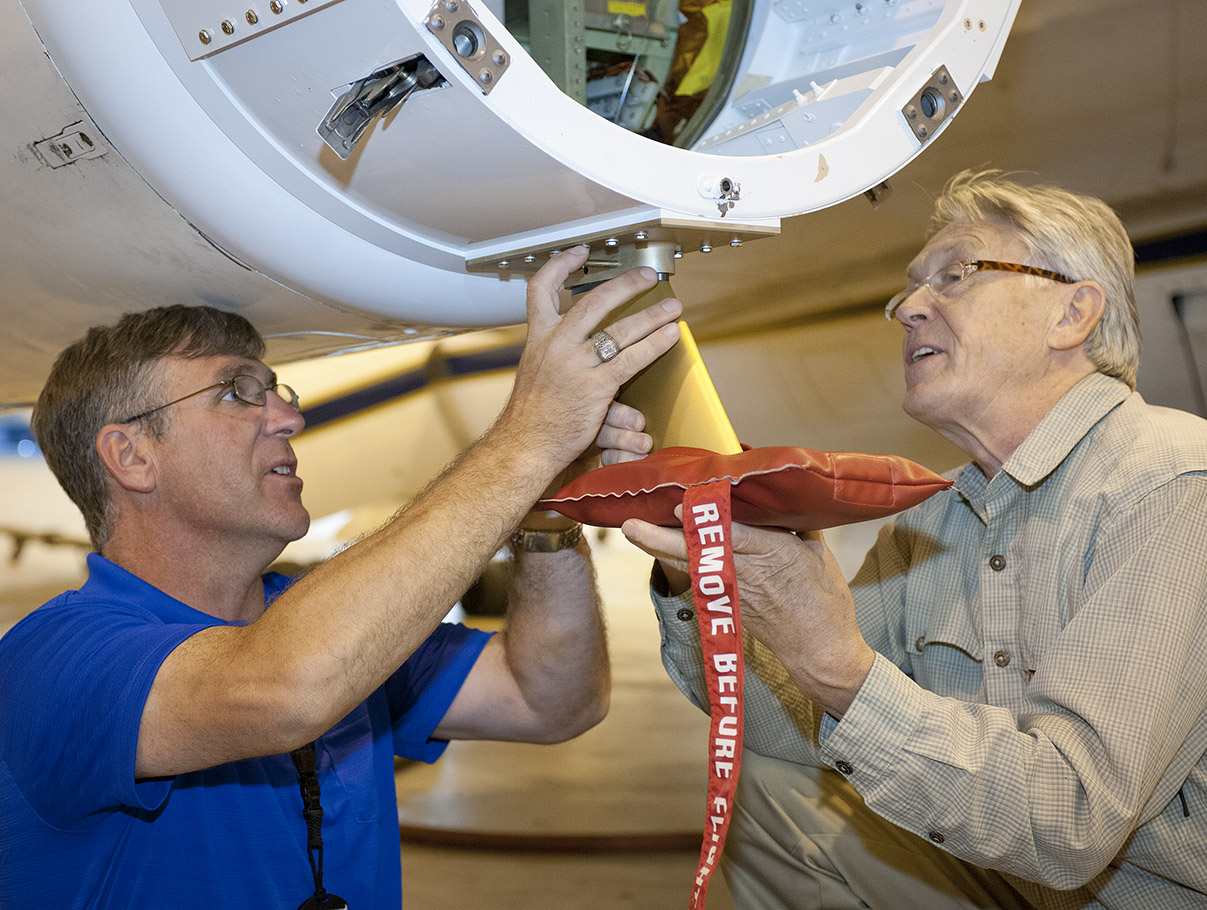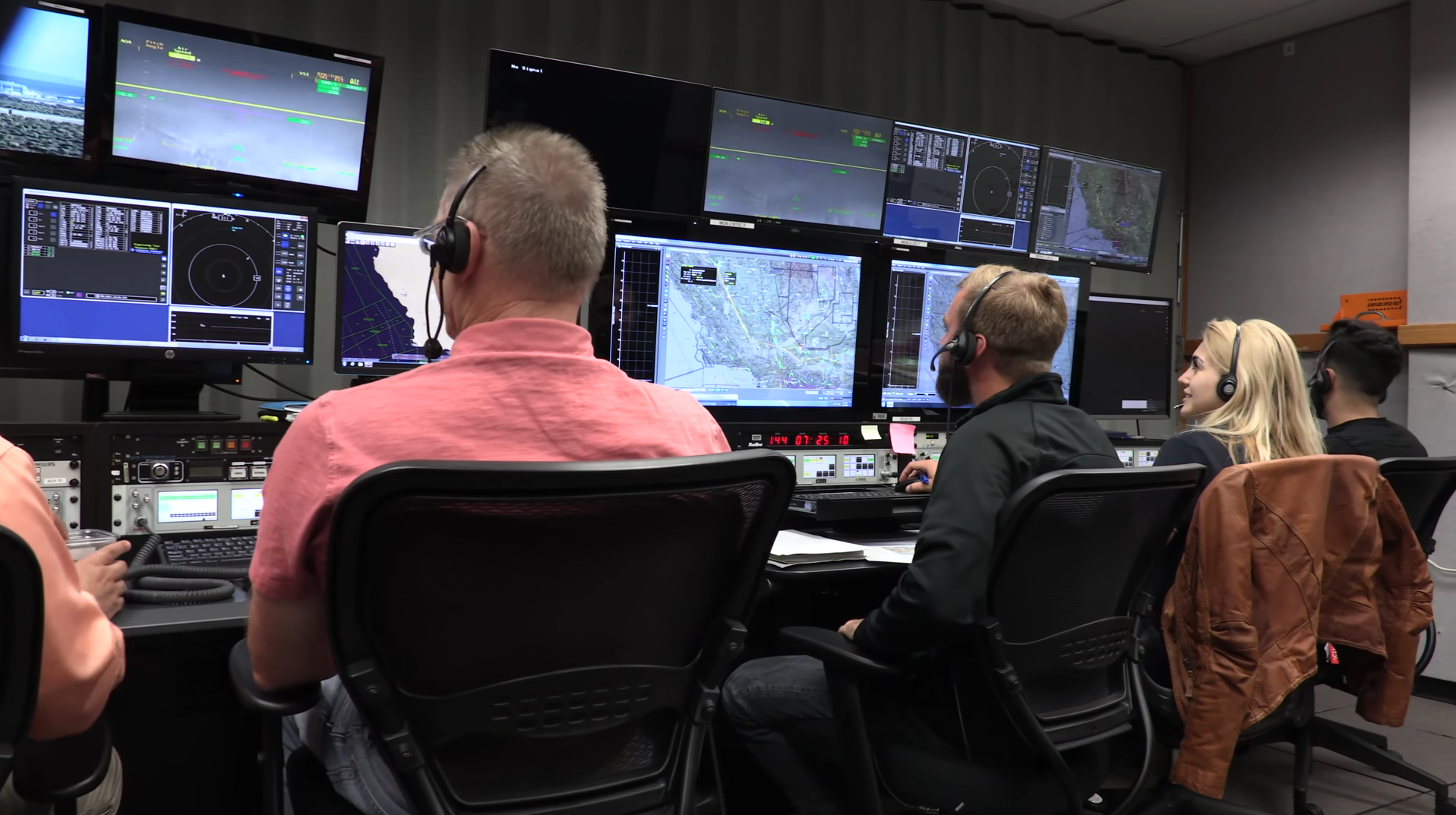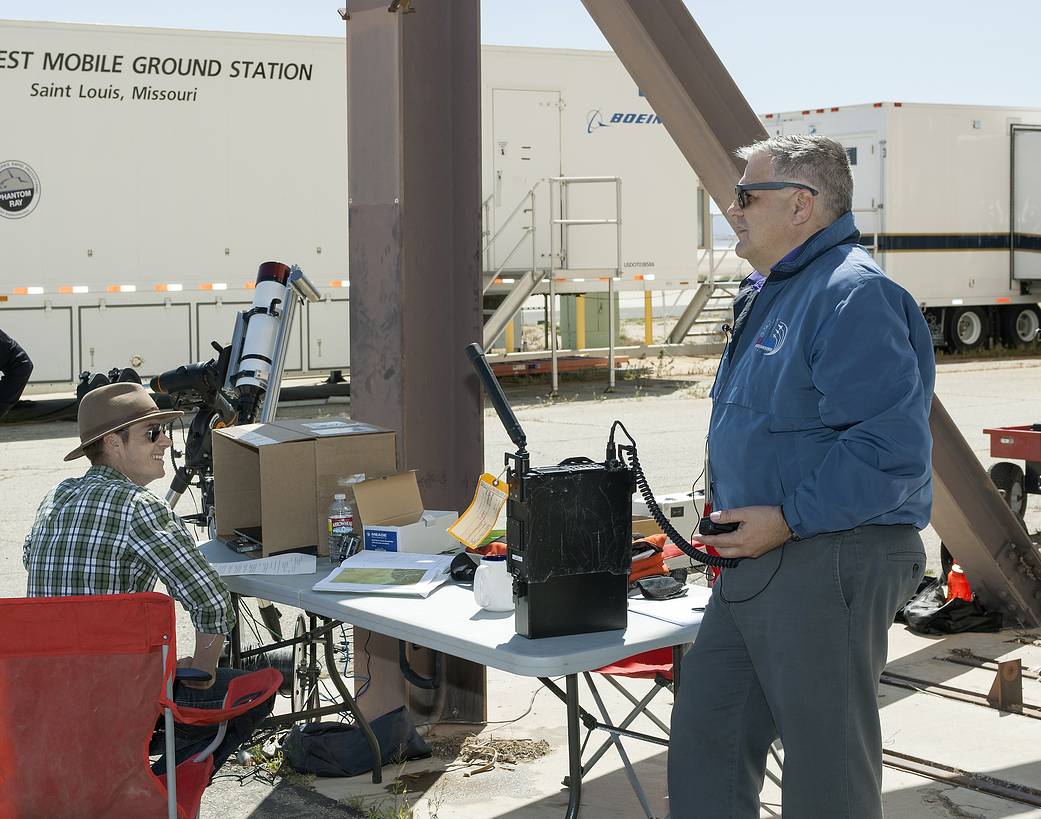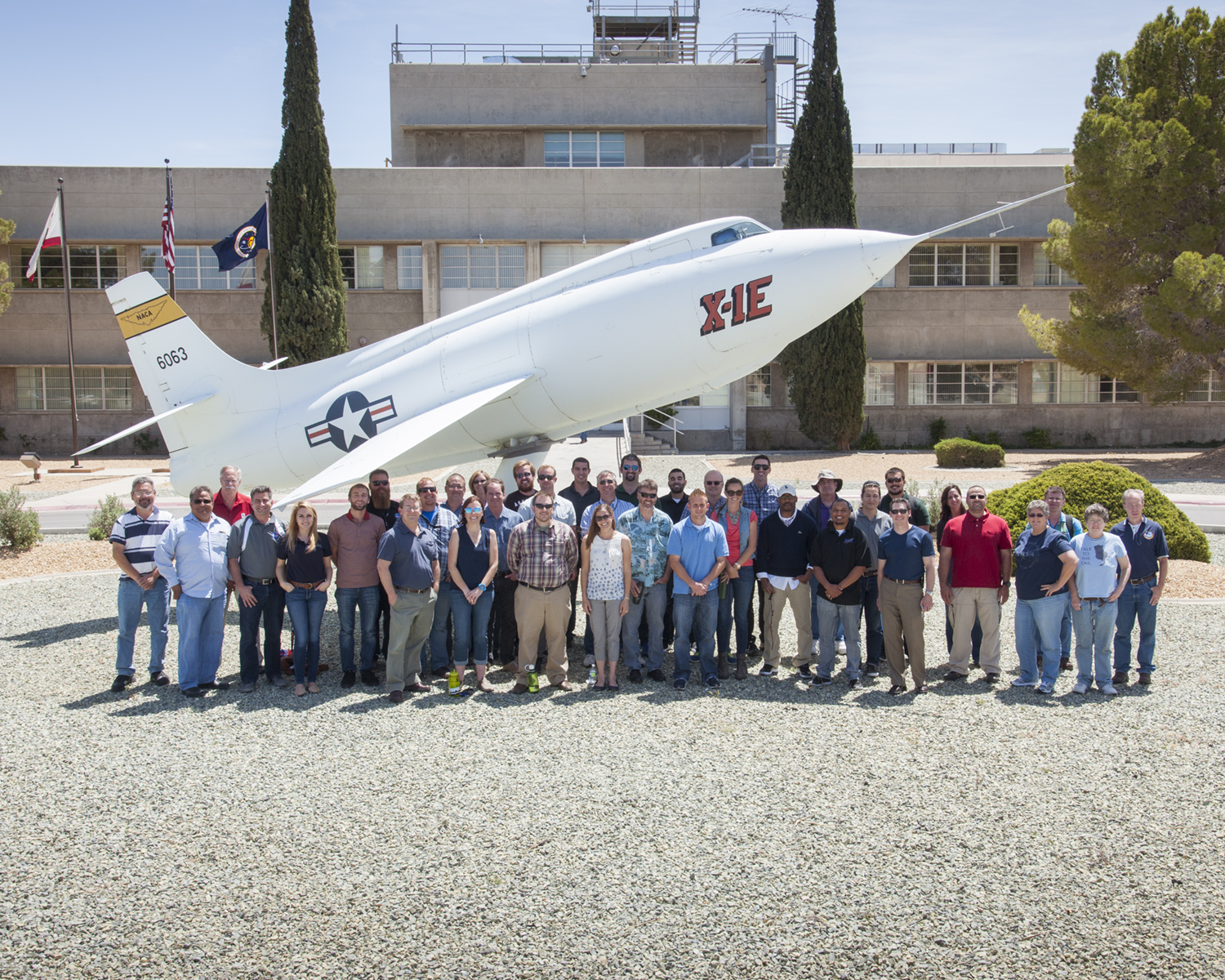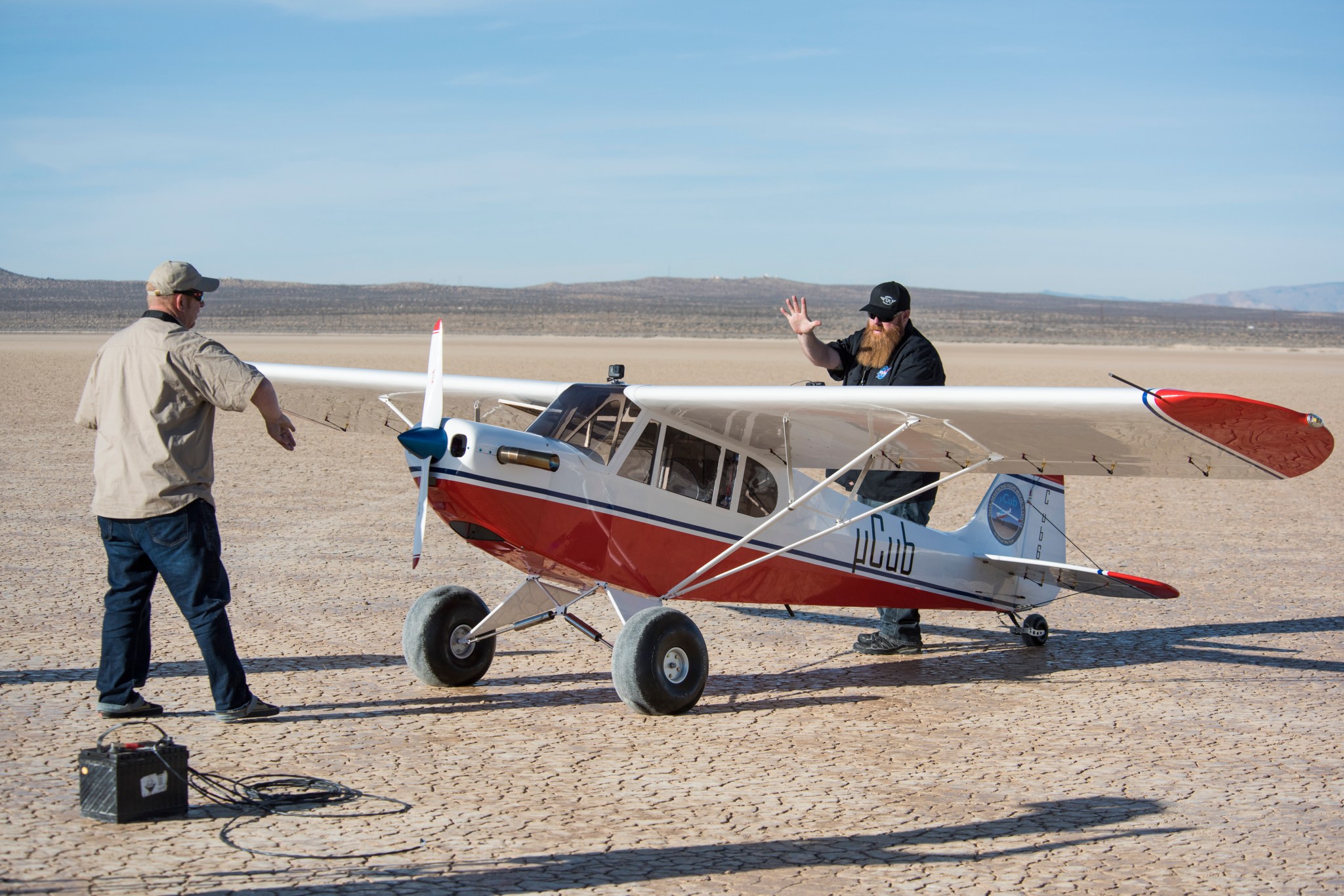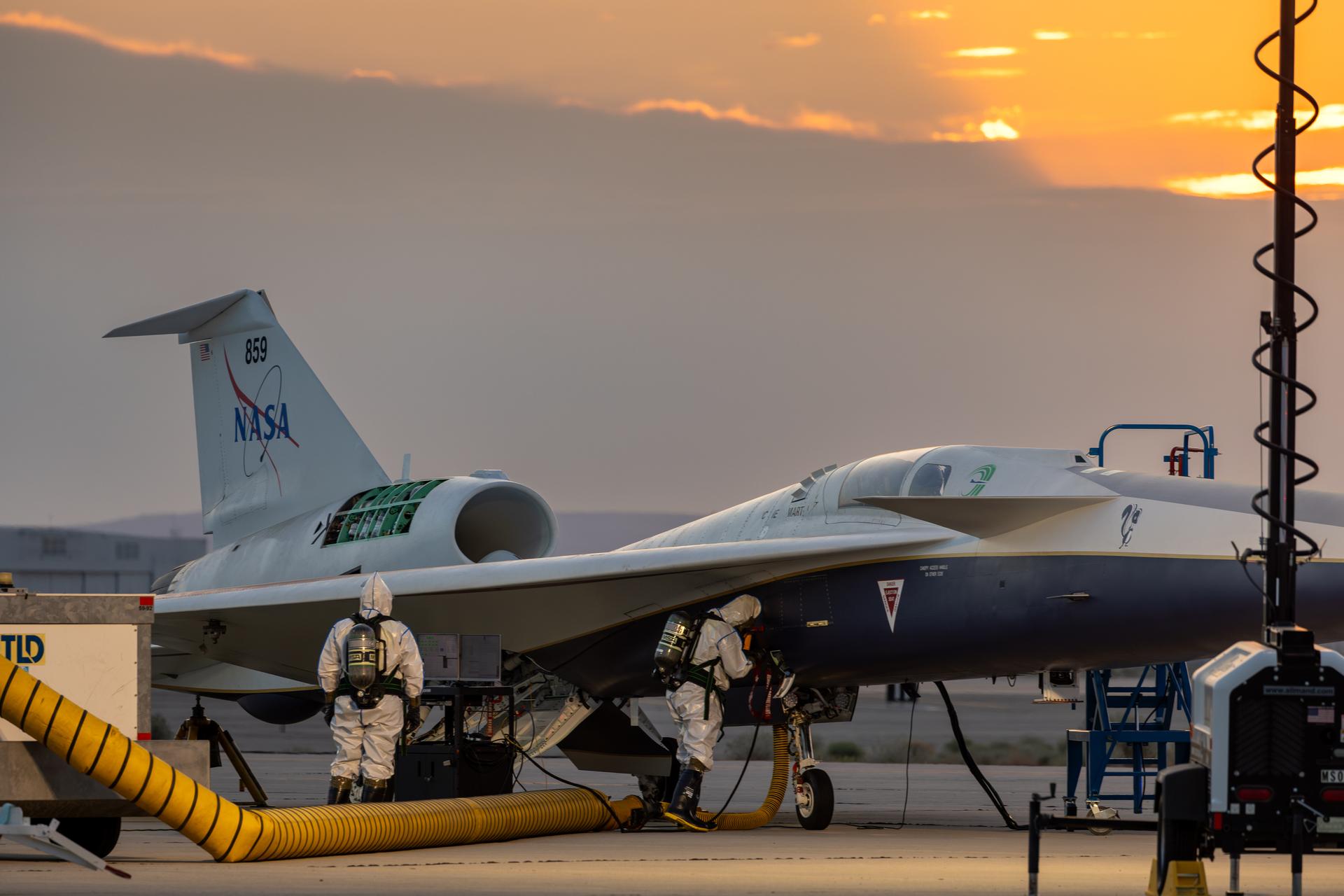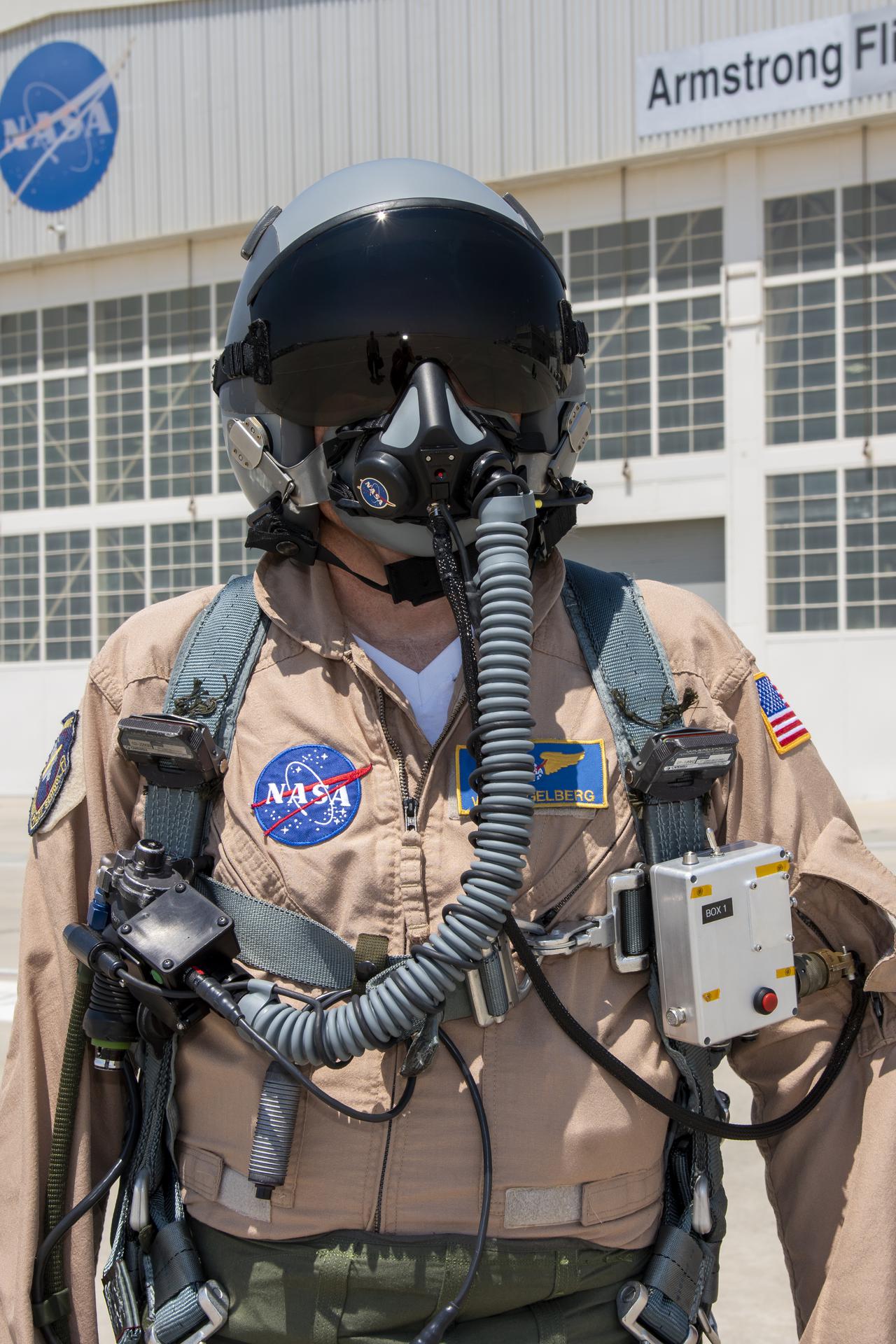Aircraft airworthiness, or ensuring an aircraft is safe to fly, is the core function of the Operations Engineering branch at NASA’s Armstrong Flight Research Center in Edwards, California. Airworthiness assessments are made throughout aircraft modifications necessary to accommodate unique research experiments and support associated non-standard maintenance needs. A systems engineering approach is utilized to evaluate and implement aircraft maintenance and modifications to an acceptable level of risk to achieve research objectives, safely, throughout the project lifecycle (concept to flight).
Aircraft Operations Engineers
Aircraft operations engineers bridge aircraft expertise with research and science experiment requirements to help transition theoretical or lab-based research objectives to flight test by functioning as co-leads of project teams in concert with the project manager and project chief engineer. As a co-lead, aircraft operations engineers routinely assess safety of flight and mission success risks due to aircraft modifications through collaboration with discipline leads and subject-matter-experts, such as egress and life support technicians, test and research pilots, mechanics and avionics technicians, electronics technicians, peer engineers, scientists, and other organizational entities on a routine basis. Assessing resource, schedule, and cost needs necessary to implement required maintenance and project support needs while deriving sound engineering solutions is key to making successful contributions to flight operations. Overall, the branch implements systems engineering principles throughout the project lifecycle.
Core responsibilities include:
- Ensuring vehicle airworthiness
- Aircraft maintenance planning and engineering dispositions
- Aero-mechanical design and fabrication
- Integration plans and procedures
- Aircraft technical and configuration management
- Supporting hazard identification and mitigation
- Mission planning and concept of operations
- Logistics support for deployed missions
- Technical briefings and flight release
- Real-time flight support (mission control, on-aircraft mission director, and/or flight test engineer)
- Flight reports
The Operations Engineering branch is staffed with engineers (traditionally mechanical, electrical, and aerospace engineers) and specialists for drafting and configuration management. Armstrong’s dynamic work environment includes aircraft hangars, airfield ramps, fabrication shops, labs, and flight simulators in addition to traditional office spaces.
Specialty areas leading the center in aero-mechanical design, configuration management, and drawing control comprise our workforce capabilities.
Aero-Mechanical Design Group
The Aero-Mechanical Design Group is the center’s primary stop for handling design tasks related to aircraft, ground support equipment, and research articles. This group develops new designs or modifies commercial-off-the-shelf (COTS) equipment/existing hardware to facilitate research/science experiment integration on aircraft meeting a variety of ground and in-flight environmental conditions. To meet mission objectives, designers often carry project tasks from infancy to implementation. This includes designs, drawings, analysis, procurement, fabrication, and installation into its final location. In addition to typical work, the Aero-Mechanical Design Group utilizes advanced metrology tools such as laser scanners and coordinate measuring machines to produce high-complexity deliverables to customers. Designers have the unique privilege of being able to work across many platforms rather being specifically assigned to one.
Configuration Management Office
The Configuration Management Office provides administrative control of the documentation for the physical and functional characteristics of critical aircraft and/or research items and any changes or discrepancies. Active and accurate team evaluation and documentation are key to avoiding unknown or unauthorized changes that may increase the risk of accidents or failures; thereby, helping to ensure airworthiness and mission success. This office facilitates project Configuration Control Board meetings involving project leads and subject matter experts and is responsible for maintaining and archiving the configuration control documentation.
Drawing Control Office
The Drawing Control Office provides project support in the form of drafting services, drawing version management, and drawing archival. The office provides drafting services through creation of new drawings and sketches, or integration of red-lines. They maintain physical and electronic storage of flight vehicle drawings, and archive all sketches for the NASA Armstrong community. This office is the controlling organization for all Armstrong drawing formats and maintains the drawing numbering system for flight vehicle projects. Like the Configuration Management Office, Drawing Control plays a vital role in facilitating timely and accurate engineering work instruction.
Featured Videos
Aeronautics Research (~8 min) – Brian Griffin
Airborne Science (~8 min) – Matt Berry
Aero-Mechanical Designers (~8 mins) – Design Team Members
Unmanned Aerial Vehicles (UAVs) (~9 mins) – Robert Rivera
Subscale UAS Engineer/Pilot (~10 mins) – Red Jensen
Draftsman & Configuration Management/Drawing Control (~8 mins) – Kelvin Siu

























